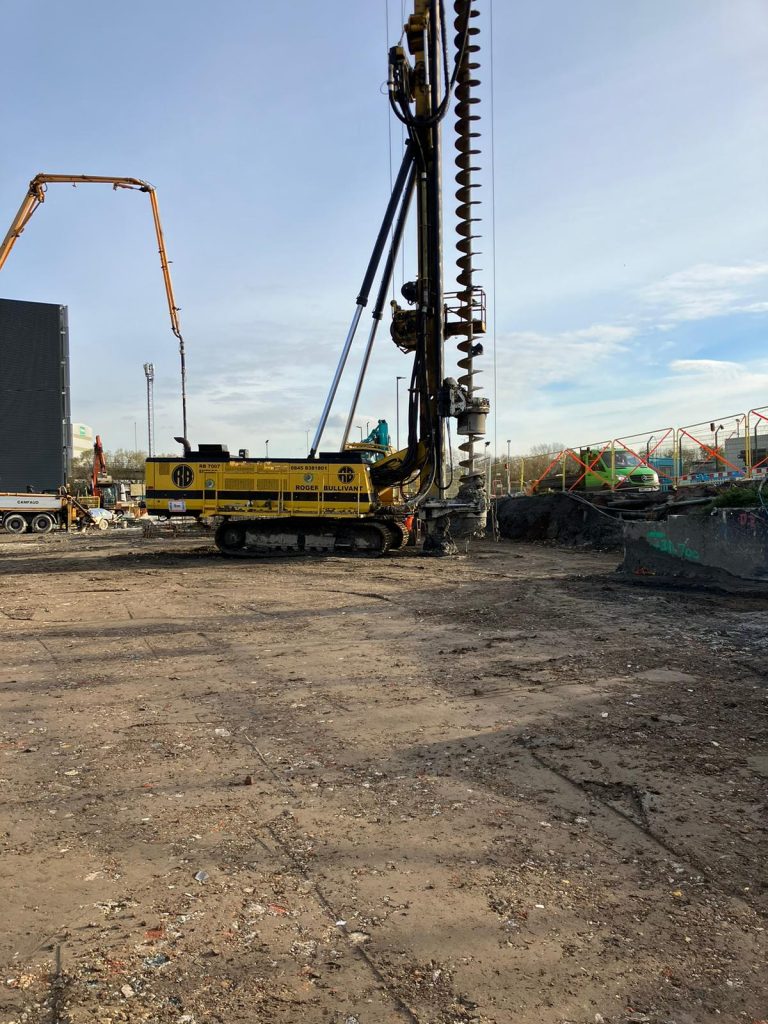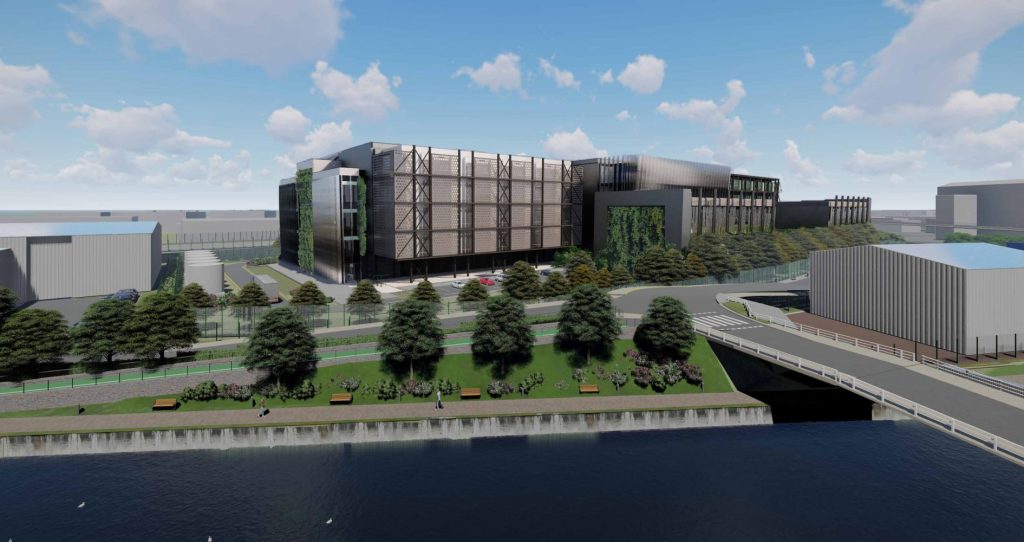PROJECT BRIEF
Roger Bullivant Limited (RBL) were approached by Sweet Projects to deliver a piling and foundation solution for the development of a new data centre complex at Bulls Bridge Industrial Estate, North Hyde Gardens, Hayes. The site was designed to include three data centre blocks and three energy centre blocks, with construction phased over a three year period.
- RBL’s scope of work included the installation of:
402 No Continuous Helical Displacement (CHD) piles of 300/600 mm diameter - 2,376 No CHD piles of 400/700 mm diameter (totaling 50,800 linear meters)
- 115 No Continuous Flight Auger (CFA) piles of 600 mm diameter
- 229 No Primary and 229 No Secondary secant wall piles for two basements within the energy centre blocks
The project presented significant technical challenges, including strict stability requirements for the basement construction and the large-scale installation of both a secant wall and CFA piles. We secured the services of our sister company, Bachy Soletanche, to install the secant wall, while the CFA piles were installed by RBL.
By completing this critical groundwork, RBL provided a robust foundation for the state-of-the-art facilities.
KEY ISSUES
Program and Cost Efficiency: The project achieved significant savings in both schedule and costs, thanks to the use of displacement piling that minimised spoil removal and off-site waste.
Coordination with Critical Infrastructure: The works were carried out alongside the operational Network Rail infrastructure, requiring careful planning and adherence to strict safety protocols. Additionally, a Thames Water sewer running beneath two of the buildings necessitated the installation of deeper CFA piles on either side of the asset to protect its integrity.
SOLUTION
- Following the installation of preliminary test piles, RBL collaborated with Sweet Projects and their consultants, HDR, to develop an optimised piling solution using CHD piles. This method provided significant advantages, including:
- Substantial reduction in waste handling and off-site disposal
- Lower environmental impact due to fewer traffic movements
- Accelerated program timeline
- To address the challenging ground conditions, piles were pre-bored to loosen the surrounding soil, ensuring the required toe depth was achieved and allowing for ground condition observations during the process.
- Network Rail Proximity: The site bordered a Network Rail line, necessitating coordinated planning and execution to ensure safe working practices and compliance with railway protocols.
- Thames Water Sewer: A Thames Water sewer running diagonally beneath two blocks required the installation of 600 mm diameter CFA piles to a depth of 26m on either side of the sewer, ensuring its structural integrity. A transfer slab was constructed above the sewer to facilitate the building’s foundation.
- CHD Piles: RBL installed 402 No 300/600 mm piles and 2,376 No 400/700 mm piles, totalling 50,800 linear meters. Pile depths ranged from 13.5 m to 18.5 m, utilising RBL’s versatile 7000 series piling rig to achieve high productivity.
- Secant Piles: For two energy centre blocks, a secant piled retaining wall was constructed with 229 No secondary and 229 No primary 750 mm piles to an average depth of 22 m and 8m.
- Reduced Spoil: Transitioning from CFA to CHD piles reduced contaminated spoil removal by over 25,000m³, significantly cutting lorry movements and minimising environmental impact.
- Increased Productivity: The CHD method allowed for a 100% increase in daily pile installations compared to CFA piles, delivering massive time savings and ensuring the project remained on schedule.





